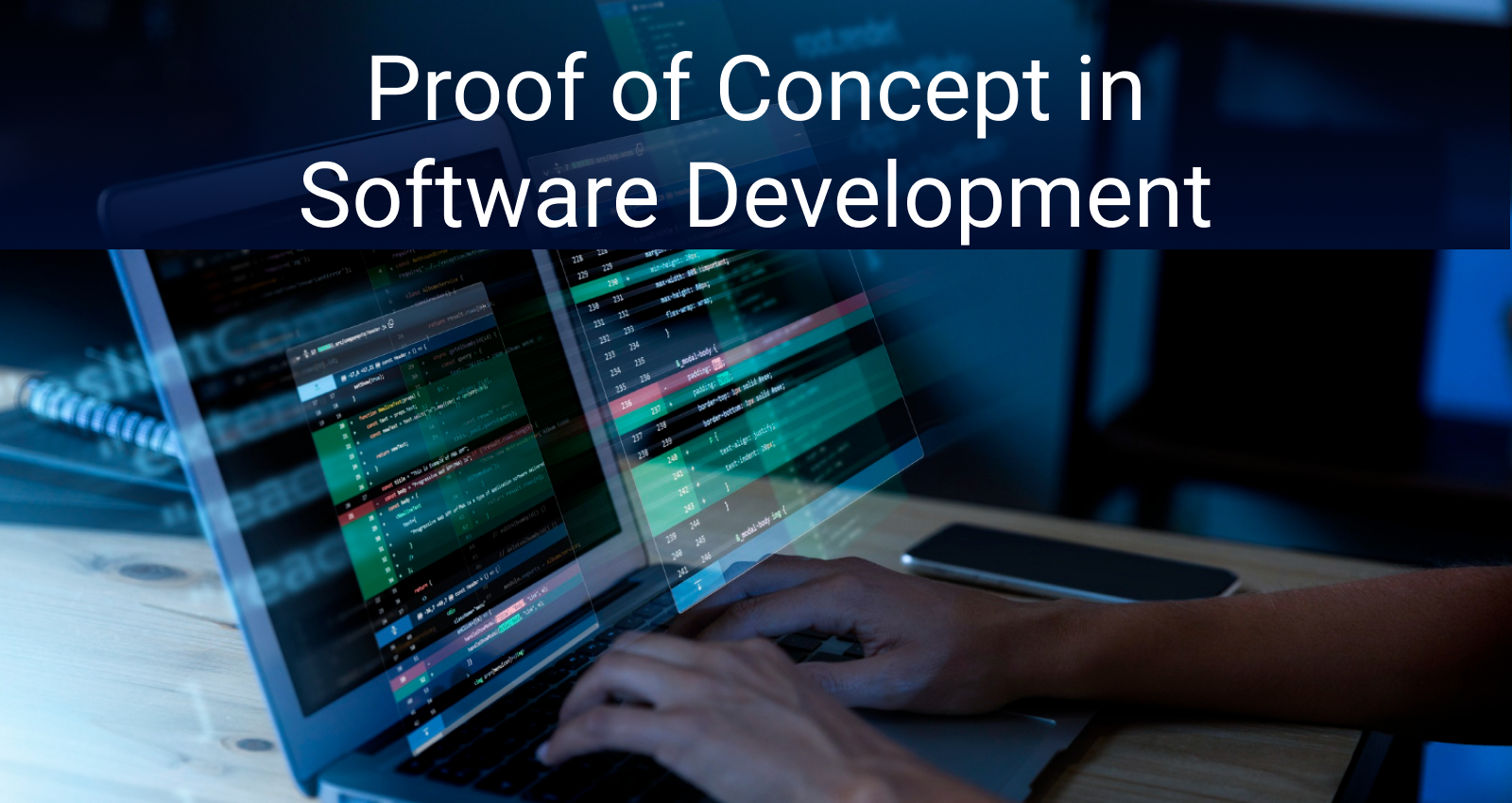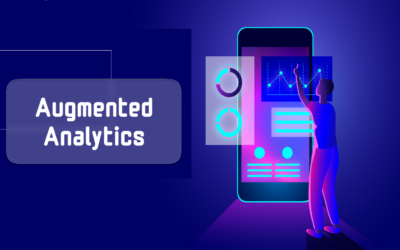What is Proof of Concept in Software Development?

Introduction:
In the dynamic world of IT services and software development, staying ahead requires innovation and efficiency. One key tool that aids in this process is the Proof of Concept (POC).
In this blog post, we will demystify the concept of Proof of Concept in software development, explore its benefits, delve into the steps of creating a POC, showcase real-world examples, and distinguish between POC, prototype, and Minimum Viable Product (MVP).
What is Proof of Concept in Software Development?
Proof of Concept (POC) is a preliminary exploration that evaluates the feasibility of a software project. It’s like a sneak peek into the future, allowing stakeholders to see a tangible demonstration of a concept’s viability before full-scale development begins. Essentially, a POC helps answer the question, “Will this idea work?”
Benefits of a Proof of Concept:
- Risk Mitigation: Identifying potential challenges early on allows for strategic planning, minimizing the likelihood of major setbacks during full-scale development. This proactive approach ensures a smoother project trajectory and enhances overall risk management.
- Cost-effectiveness: By testing a scaled-down version of the project, resources are used more efficiently. This prevents unnecessary expenditures on a concept that may prove unviable, optimizing budget allocation and promoting fiscal responsibility throughout the development process.
- Stakeholder Confidence: A successful POC instills confidence in stakeholders by providing tangible evidence of the project’s feasibility. This confidence is essential for garnering support and commitment throughout the development lifecycle.
- Informed Decision-Making: Armed with the results of a POC, decision-makers can make well-informed choices about whether to proceed with the full-scale development. This ensures that resources are allocated to projects with a higher likelihood of success.
- Technical Feasibility: POCs help assess the technical feasibility of implementing a particular solution. This evaluation ensures alignment with existing technical capabilities, preventing potential roadblocks and ensuring a smoother development process.
- Faster Time to Market: Streamlining the development process by addressing potential issues early significantly accelerates the time to market. This agility is crucial in today’s fast-paced tech landscape, allowing businesses to capitalize on opportunities swiftly.
- Improved Collaboration: POCs encourage collaboration among team members and stakeholders. This collaborative environment fosters a shared understanding of the project’s goals and challenges, leading to more effective communication and teamwork.
- Competitive Advantage: Being able to showcase a working concept ahead of competitors provides a strategic advantage. This early visibility in the market can attract attention, clients, and partners, positioning the project or product favourably against competitors.
- Accelerated Innovation: POCs serve as experimental playgrounds, allowing teams to test new ideas and technologies without committing to full-scale development. This promotes a culture of innovation within the organization, driving continuous improvement.
- Scalability Assessment: Understanding how a concept performs on a smaller scale is crucial for predicting and planning for scalability as the project expands. This assessment ensures that the developed solution can grow seamlessly to meet increasing demands and user bases.
How to Create a Proof of Concept – Steps:
- Define Your Objectives: Clearly articulate the goals of your Proof of Concept (POC). What do you want to achieve? Defining objectives provides a roadmap for the POC, ensuring that it addresses specific questions and concerns. This clarity sets the foundation for a focused and purpose-driven POC, guiding the development process towards meaningful outcomes.
- Select Your Key Features: Identify and prioritize the essential features that will validate the concept. Focus on functionalities critical to proving the viability of your project. By selecting key features, you streamline the POC process, concentrating efforts on core aspects and avoiding unnecessary complexities that might dilute the clarity of your concept.
- Develop and Test: Transform your selected features into a small-scale version of the software. Rigorously test the POC to ensure that the chosen functionalities perform as intended. This development and testing phase provides tangible evidence of the concept’s feasibility, helping to identify potential challenges and validate the core functionalities before moving forward.
- Document Your Work: Comprehensive documentation is paramount for the success of your POC. Record the entire process, including objectives, methodologies, challenges faced, and solutions implemented. This documentation serves as a valuable reference for future phases of development, enabling efficient communication, knowledge transfer, and informed decision-making based on the lessons learned during the POC.
- Present Your Work to Stakeholders: The culmination of your POC journey involves presenting the results to stakeholders. Clearly communicate the objectives, methodologies, and outcomes of the POC. Encourage feedback and engagement from stakeholders to refine the concept further. This presentation not only validates the project’s potential but also ensures that key decision-makers are well-informed and confident in moving forward with the full-scale development.
Examples of Proof of Concept:
- Virtual Reality Gaming: Before investing in the full-scale development of a virtual reality game, a Proof of Concept (POC) allows developers to validate the feasibility of the gaming concept in a controlled environment. This may involve testing the compatibility of game mechanics, user interfaces, and overall user experience in a virtual setting, ensuring that the core elements of the game align with the intended vision.
- IoT Home Automation: Implementing Internet of Things (IoT) devices in a home automation system undergoes scrutiny through a POC. This involves testing the integration, communication, and functionality of various devices within a controlled environment, confirming that the IoT components work seamlessly together before scaling up to a complete home automation solution.
- Machine Learning Algorithm: A POC for a machine learning algorithm involves creating a scaled-down version to assess its accuracy and effectiveness. This initial testing phase allows developers to refine and validate the algorithm’s performance before integrating it into a larger system, ensuring it meets the intended objectives.
- Blockchain Integration: Prior to integrating blockchain technology into a project, a POC examines its feasibility. This includes testing the technology’s compatibility, security, and efficiency within a specific context. By conducting a POC, developers can identify potential challenges and validate the suitability of blockchain for the intended application.
- Automated Customer Support Chatbots: Testing the functionality of automated customer support chatbots through a POC is crucial. This involves developing a small-scale version of the chatbot to assess its responsiveness, accuracy, and user interaction. The POC allows developers to refine and optimize the chatbot’s performance before deploying it on a larger scale for customer support services.
POC vs. Prototype vs. MVP- Difference:
- Proof of Concept (POC): A Proof of Concept (POC) is a small-scale demonstration to validate the feasibility of a concept or idea. It focuses on answering the fundamental question, “Will this idea work?” without fully developing the product. POCs are exploratory, serving to identify potential challenges and risks early in the development process.
- Prototype: A prototype is a more advanced model that simulates the appearance and functionality of the final product. It goes beyond a POC by providing a tangible representation of the user interface and interaction. Prototypes are often used for user testing, allowing stakeholders to interact with a visualized version of the product and provide feedback.
- Minimum Viable Product (MVP): A Minimum Viable Product (MVP) is a functional version of the product with minimal features. It is developed to gather user feedback and validate the market. Unlike a POC or prototype, an MVP is a fully deployable solution, designed to test the core functionalities and assess the product’s viability in a real-world environment. MVPs aim to deliver value to users while minimizing development time and resources.
Conclusion:
In the realm of software development, the Proof of Concept serves as a guiding light, illuminating the path to successful and efficient projects. By systematically testing and validating concepts before full-scale development, businesses can minimize risks, optimize costs, and ensure that their endeavours are built on a solid foundation.
Embracing the power of POCs not only accelerates innovation but also provides a strategic edge in the competitive landscape of IT services. So, the next time you embark on a software development journey, consider the invaluable role of a Proof of Concept in shaping the future of your project.
Are you looking for any IT Services such as Web design and Development, Professional/Staff Augmentation Services, Cloud Computing, Mobile App Development, Digital Marketing Services and more? Connect Stridefuture Technology, which helps to meet your requirements.
{StrideFuture Technology, a full-service company specializing in Software Solutions and Consultancy services. We specialize in Personal, Business, IT Services, Web design and Development, Mobile App Development, Digital Marketing Services, and much more you can dream Virtually with us! Reach out for more service at StrideFuture Technology.}









